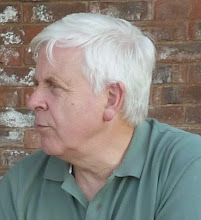The seminar confronted me with some ontological issues about the nature of literacy texts and practices. I position myself as a scholar within the New Literacy Studies, with user knowledge of ICT but not research knowledge so this is the first time I have really sat down to think some of these things through. I am sure a lot of thinking has already been done so pointers and references would be welcome if I am going over old ground. But I would find it useful to have some explicit review of these issues even if there are good existing answers to them that people have thought through.
1 The virtual world often, paradoxically, points up features of the real, material world of print literacy that we have perhaps overlooked in the past rather than changing them. An example is the boundaries of a text (a paragraph, a page, a book, a set of volumes?); how texts change over time, their durability, stability, the contributions of multiple authors, the work they do within social (e.g. legal or medical) systems. How do new technologies change the nature and boundaries of what we have in the past called “the text” and are alternative labels like “document” or “artefact” more useful when we are talking across print and digital domains?
2 Is it misleading to try and apply old metaphors of communication to the new virtual environment such as writing/reading or speaking/listening… are these concepts tied to particular technologies and material circumstances e.g we say that a book “speaks” to us but it doesn’t really – unless it is audio taped. Do we need some new language terms to describe what we are doing in a virtual world (some are already developing – e.g. could you blog offline??)
3 I don't think is useful to characterise printed texts as inert and fixed in contrast to digital texts that are interactive, “speak back to us” and are changed by the machines we type them into. Rather might we think about the "virtuality" of printed texts as well - as objects that change and move and interact with the reader? In particular, are approaches from Science and Technology Studies, including Actor Network Theory, helpful in bridging our understandings of literacy and digital worlds? These emphasise distributed agency (and authorship) co-ordinated action through networks of things and people. This seems to fit easily with digital communication environments, but how about traditional print and oral interactions?
4 When we make comparisons between print and digital media perhaps we take quite contrasting genres as prototypical texts of each medium (e.g. the novel v the spreadsheet) in order to point up the differences. However, there are parallels with each of these genres in the other medium so may be there are more continuities than we think and it would be good to look across different genres and see how they are expressed as the same or different in print and digital environments.
Amy thoughts and comments welcome!!
Tuesday, 3 November 2009
Subscribe to:
Post Comments (Atom)


Mary - I'm going to pick up some aspects of your 'ontological' theme in my next post, so in this little 'comment' space I'd just like to note that you mention Actor Network theory as a possible route to 'bridging our understandings of literacy and digital worlds'.
ReplyDeleteI know that ANT crops up in the 'Improving Learning at College' book that came out of the LfLiFE project (pp.176-7)and Mary Lea has also referred to ANT in her writing (can't remember the reference, but we've argued about it a bit because ANT is something I haven't really managed to 'get' up to now). ANT was quite popular in the networked learning community a while back, if I remember (I heard Steve Fox talk about it in a TLRP 'Technologies, Communities, Learning Relationships' seminar in 2005:
http://crll.gcal.ac.uk/docs/TLRP_ContextSeminars/TLRP_ContxtSem3_%20Fox.doc). I think there is also a 2001 book which Chris Jones edited which has something by Steve Fox on ANT in it too.
But I haven't heard much about it from TEL colleagues more recently. Perhaps we should jointly revisit it as Mary H suggests?